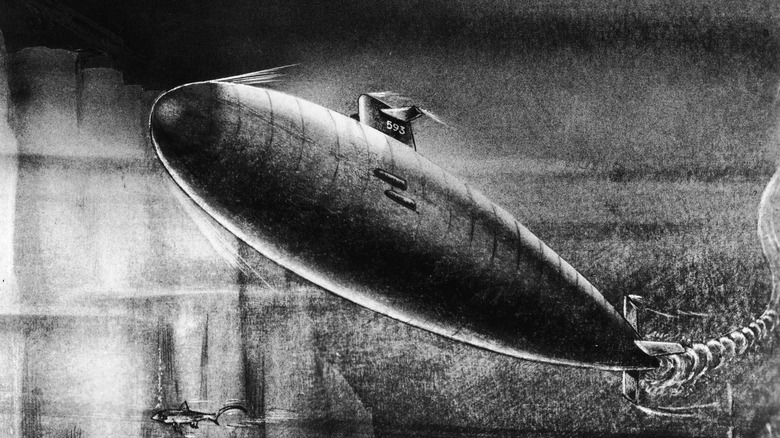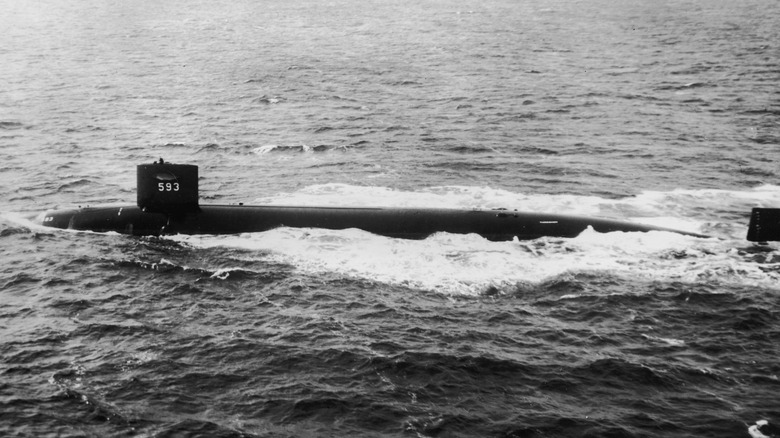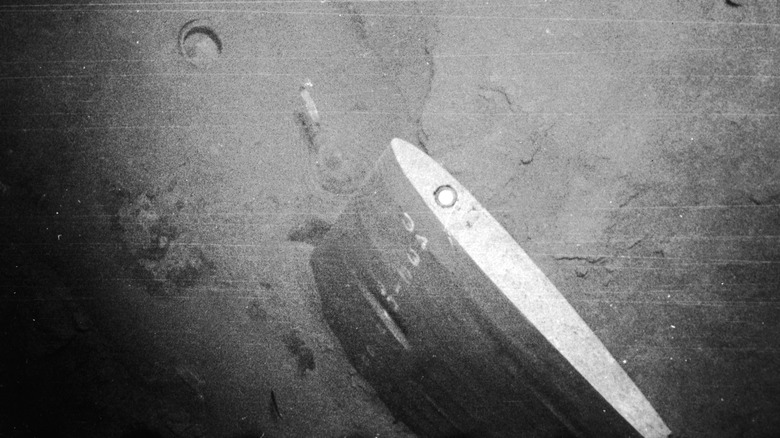The Dark Descent: USS Thresher's Tragic Nuclear Submarine Implosion
The June 2023 tragedy of the Titan submersible, which is believed to have been lost in a catastrophic implosion that resulted in the deaths of the five men on board, was an event sadly not without precedent. April 2023 marked 60 years since the loss of the formidable USS Thresher, in a similar yet very different implosion.
Much has been made of the safety concerns regarding the Titan voyage, but Thresher was a very different beast. As a nuclear-powered submarine, its reactor granted the capacity to continue operating for months without needing to refuel in the conventional sense, meaning that it was designed for protracted times spent at depth. However, things went horribly wrong regardless.
Here's the awful story of what happened to USS Thresher, and what's understood about the sad logistics of how it happened. All this time later, there are still some elements of its fate that remain unclear.
The creation and doomed trials of the USS Thresher
The Thresher was a technological marvel (like certain other submarines) on its creation. Designed for pursuing naval targets and delivering optimal damage, it boasted a streamlined design to boost its agility and maneuverability beneath the waves, and armaments – planned to include the ASROC – to allow it to tackle a variety of potential targets. April 1961 saw it begin the painstaking trial process, which would occur at Maine's Portsmouth Naval Shipyard.
Tragically, the very nuclear power that powered the formidable Thresher would seemingly play a vital part in its downfall. As technologically advanced as it was, it was intended to reach new depths in the ocean that the U.S. Navy hadn't plumbed before. It was in deep sea trials to demonstrate this capacity, however, that the Thresher was lost.
On the morning of April 10, 1963, Thresher was engaging in deep dives to its estimated maximum depth: 1,300 feet. It was regularly reporting to the nearby USS Skylark, to which it had been designated during this period. Just after 9:12 am, the last communication was received, suggesting that the Thresher was experiencing an issue.
It's believed that water entered the vessel through insecure joints and that this caused the reactor and other systems to shut down. When this happened, the Thresher would have continued to descend helplessly until it imploded in waters deeper than it could withstand.
The true depth and mystery of the tragedy
On June 27, Thresher's remnants were found by Trieste II. It was tragically clear that all 129 members of the submarine's crew had perished, and with fragments resting on the bottom of the ocean at a depth of 8,400 feet, far beyond its safe operating capacity, it can only have imploded. The exact time scale of things is still unknown. A navy inquiry report that was unclassified in July 2021 details that USS Seawolf, another submarine searching for Thresher, received several signals (some seemingly in response to its own) that it interpreted as potentially coming from surviving members of the latter's crew. This was after it was deemed to have already imploded.
However, Bruce Rule, who had been part of the inquiry, reportedly told the Integrated Undersea Surveillance System Caesar Alumni Association that "Seawolf was confused by the active sonar and noise created by the destroyers and the diesel submarine Sea Owl searching for Thresher on 11 April 1963, the day after she was lost." The noises, according to Rule, were coming from these other ships.
Though the sequence of events remains unclear, the scale of the disaster is anything but. In April 2013, Maine Governor Paul R. Lepage issued a proclamation to mark fifty years since the submarine's sinking. The proclamation, posted on USSThreasher.com, proudly declared, "The state of Maine and its citizens, and the entire United States of America and her citizens, are greatly indebted to the sacrifice of these brave pioneers."


